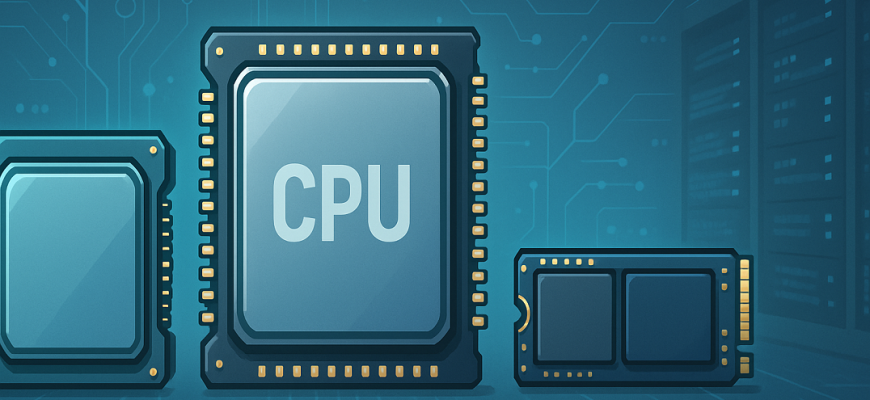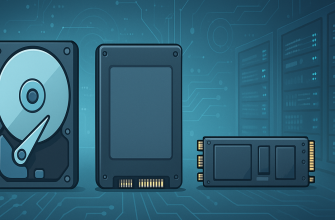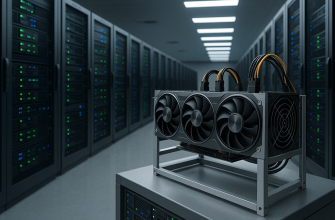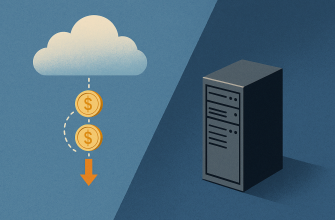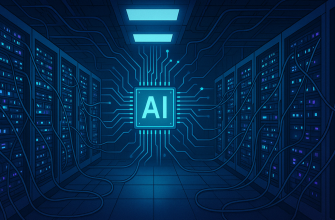- New Server CPUs in 2025: What the Market Has to Offer
- The Evolution of Server CPUs: 2025 at a Glance
- AMD EPYC “Siena” and “Turin”: A Bold Move Forward
- Intel Xeon 6 “Granite Rapids” and “Sierra Forest”
- ARM-Based Solutions: The Quiet Revolution
- How to Choose the Right Server Processor in 2025
- Final Thoughts: The Future Looks Bright
New Server CPUs in 2025: What the Market Has to Offer
The server hardware market is entering a new era in 2025, driven by growing AI demands, cloud computing expansion, and a hunger for energy efficiency. With several major players unveiling their next-generation server processors, companies must stay ahead to leverage the best technology available. Here’s a closer look at the most exciting server CPUs hitting the market this year.
The Evolution of Server CPUs: 2025 at a Glance
In 2025, the battle for server supremacy is more intense than ever. AMD, Intel, and emerging players like ARM-based chip manufacturers are all introducing processors that promise higher performance, lower power consumption, and better scalability.
Key trends shaping the server CPU market include:
- Focus on AI and machine learning workloads
- Enhanced energy efficiency
- Increased core counts and advanced threading
- Integration with specialized accelerators
AMD EPYC “Siena” and “Turin”: A Bold Move Forward
AMD continues to innovate with its EPYC series. The 5th generation EPYC “Siena” chips are optimized for edge servers and cloud deployments, offering a balance of performance and cost. Meanwhile, the upcoming “Turin” processors, based on the Zen 5 architecture, push multi-core scalability to new heights — with rumors suggesting configurations up to 192 cores.
Key features:
- Zen 5 architecture
- PCIe 5.0 and DDR5 support
- Advanced power management for greener data centers
Intel Xeon 6 “Granite Rapids” and “Sierra Forest”
Intel’s response to rising competition is impressive. The Xeon 6 lineup splits into two families: “Granite Rapids” for performance-demanding tasks and “Sierra Forest” for ultra-dense cloud-native workloads.
Highlights of Xeon 6:
- Built on Intel 3 process technology
- Specialized cores for different workloads (P-cores and E-cores)
- Support for CXL 2.0 for dynamic resource sharing
Intel aims to regain ground in hyperscale data centers and AI inference by focusing on both raw horsepower and efficiency.
ARM-Based Solutions: The Quiet Revolution
While AMD and Intel battle it out, ARM architecture is quietly taking over niches in the server market. Companies like Ampere Computing and Amazon (with its Graviton processors) are showing that ARM servers can deliver massive performance at a fraction of the power budget.
Advantages of ARM server CPUs:
- Outstanding energy efficiency
- Lower TCO (Total Cost of Ownership)
- Growing ecosystem support for Linux-based applications
In 2025, expect even more cloud providers to offer ARM-based instances to customers seeking cost-effective scalability.
How to Choose the Right Server Processor in 2025
Selecting the best server CPU depends on your specific needs:
- High-performance computing (HPC): Opt for AMD Turin or Intel Granite Rapids.
- Cloud-native workloads: Look at ARM solutions or Intel Sierra Forest.
- Edge computing: Consider AMD Siena for a perfect balance of price and performance.
- AI and ML training: Focus on CPUs with built-in accelerators and high memory bandwidth.
The right choice can dramatically impact operational costs, performance, and scalability in today’s competitive environment.
Final Thoughts: The Future Looks Bright
The 2025 server CPU market is vibrant and full of innovation. Whether you’re upgrading an on-premises data center or expanding cloud infrastructure, there’s no shortage of powerful options. Staying updated on the latest server processors will be crucial for companies aiming to boost performance, cut energy bills, and prepare for an AI-driven future.

